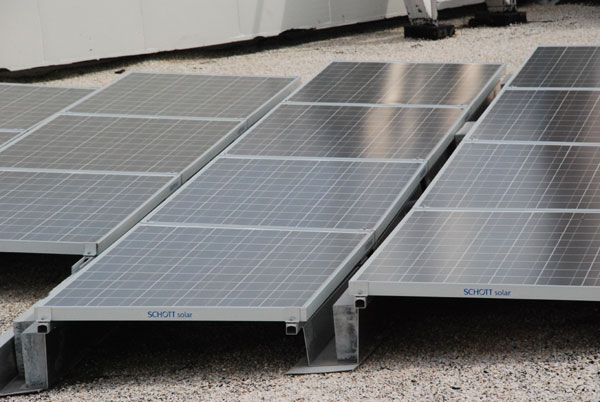Training soldiers for battle is not an easy task nor is it energy efficient. A United States state-of-the-art military facility located in New Jersey called the ‘Battle Lab’ sees almost 20,000 military and other related personnel from various armed forces in the country come every year to be trained and prepped for battle. The lab features vehicle rollover trainers, shooting ranges and other high technology simulators. And, although the facility prepares US soldiers for battle, the fact is that these high-tech utilities use almost 1,833,800 kilowatts of electrical power annually. In order to save energy and tax payers’ money, the National Guard asked the Army Corps to help them construct a solar power unit which it finished building at the Joint Base McGuire-Dix-Lakehurst last year.

The project comprises a solar photovoltaic power panel array mounted on the Battle Lab’s 128,000 square foot roof. The array covers almost 71,000 square feet of the facility’s roof and is placed alongside a preexisting array. In order to make the energy harnessed by the panels usable, the panels’ current is passed to an inverter which transforms the given energy into alternating current at a much higher voltage. The power is then passed to the lab’s transformers where it can be used.
The newly placed array along with the preexisting one produces about 30 percent of the Battle Lab’s annual energy requirements, saving almost $118,000 annually. Excess energy from the facility is shared with the public as the project is tied to the public power grid. Additionally, the project also falls under the New Jersey Solar Renewable Energy Certificate Program where owners who can deliver more than 1,000 kilowatt/hour of electrical power annually to the public grid are given a certificate that can be sold for cash. The National Guard is expecting to generate $100,000 to $140,000 annually through the program and plans to invest the money in other energy producing projects.
Via: Njtoday




